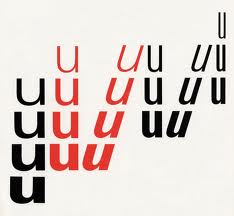There have been various failed (all of them) attempts to automate the generation of different font weights. They failed because they are pretty simple algorithms, and while they theoretically do the job, they range, aesthetically, from poor to awful in their output. A font has to be drawn at the weight and for
Back in the long ago (I know you know this, but others may not), a "font" was a complete set of characters of a particular typeface in a specific size. Each character for each size was created individually to look right on a page. Letterpress characters took into account the fact that they would be impressed into the surface of the paper. They were three-dimensional.
When offset lithography came along, quickly followed by photo-typesetting, there were two big changes: type was two-dimensional, so that characters now had to be redrawn for the new medium; and photo-typesetting made characters scalable.
The problem with scaling is that a font is drawn to look optimum at a specific size. Enlarge it or reduce it too much, and you generally end up with a degraded appearance that won't work in professional design. Photo-typesetting addressed with with different sets of film for use in certain ranges of final output size.
The same principle applies to bolding, extending or condensing a font. You can't just "Offset Path" and end up with a pleasing variant. There's an ocean of garbage fonts out there from the 1990s era when people went nuts with Fontographer and similar programs, churning out "type families" that consisted of nothing but machine-modified versions of a basic font. They come bundled with consumer-grade layout programs like Print Shop.
A bold font has to be drawn as a bold font, and its kerning has to be adjusted differently than a light, medium, or heavy version.
The same is true of size. Great display faces are drawn with much finer detail than text faces, and can't be used at text sizes. Great text faces look clunky at display sizes when compared with the same font at text sizes. All professional fonts are drawn to be used within a particular, fairly narrow range of sizes. They are definitely not drawn to be arbitrarily "emboldened."
To make the point really obvious that it's not just a matter of adroit mechanical scaling, here are samples of Garamond Premier Pro in normal-weight Caption and Display fonts at 30 pt (headline), 18 pt (subhead) and 12 pt (text).

Having harrumphed all that, there are (rare!) occasions when you have no choice but to fake it, when the weight you need is semi-semibold and you only have regular and semibold to choose from. Provided you tell no-one, you can fake it by adding a very fine stroke to the outside of the characters and adjusting the tracking and kerning manually. This can be useful when you have white text reversed out from a black background, for example, and you need to enfatten it a tad.




